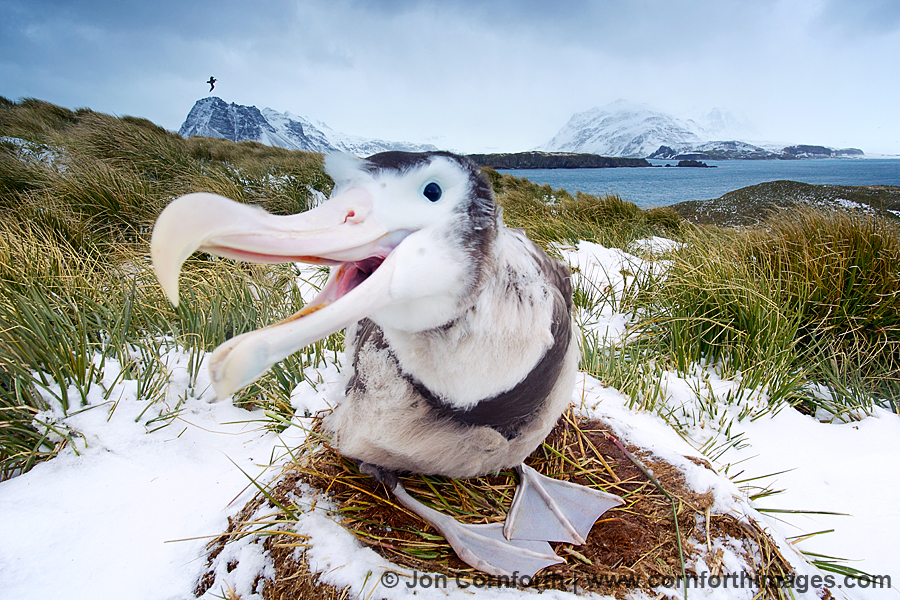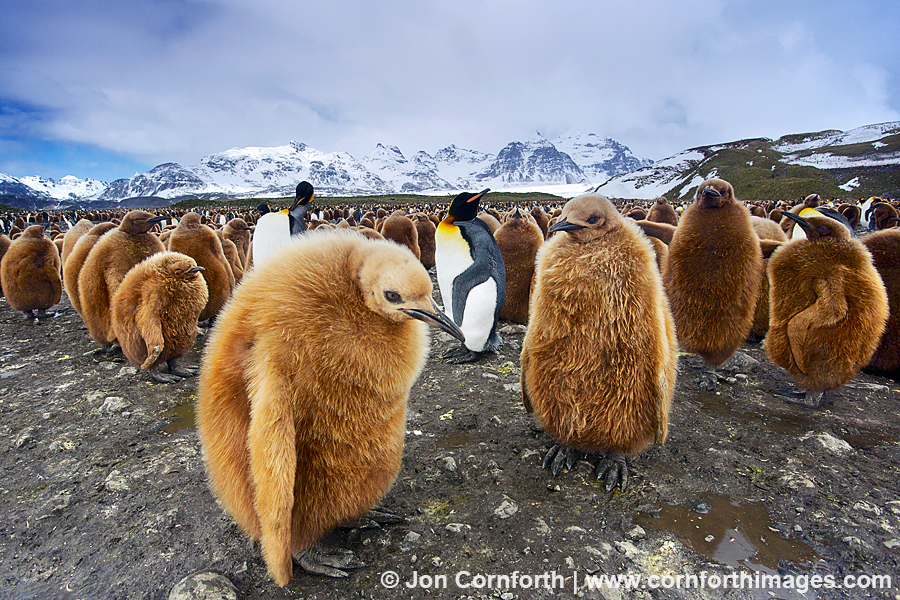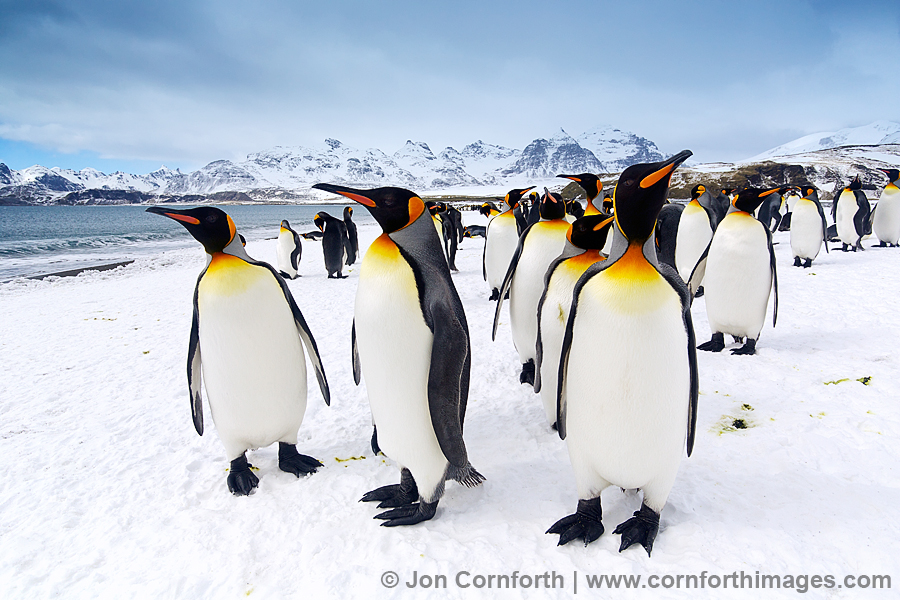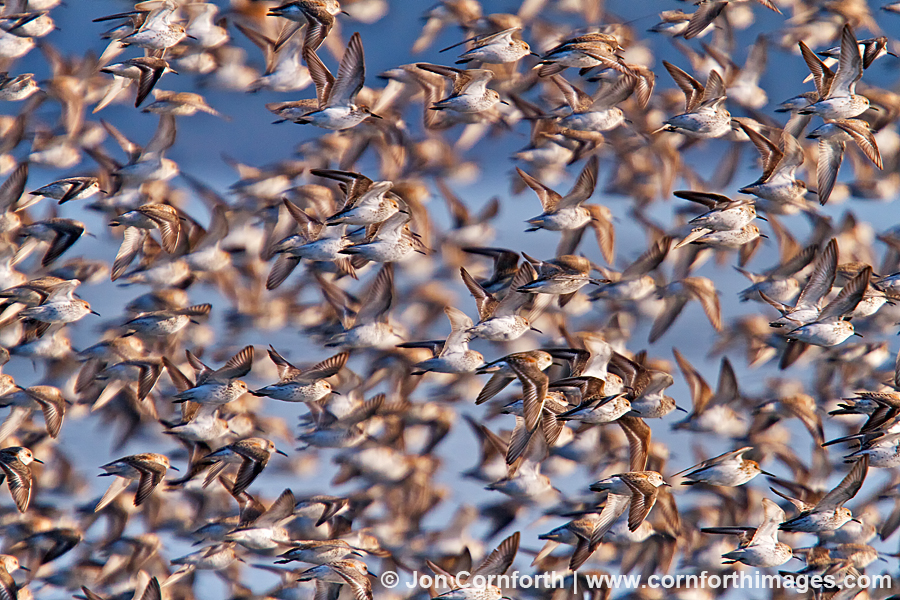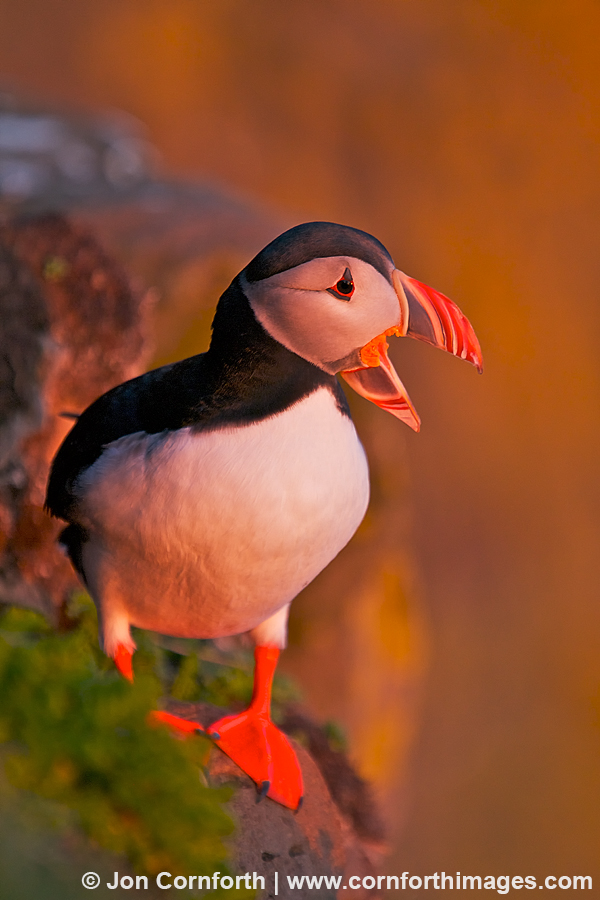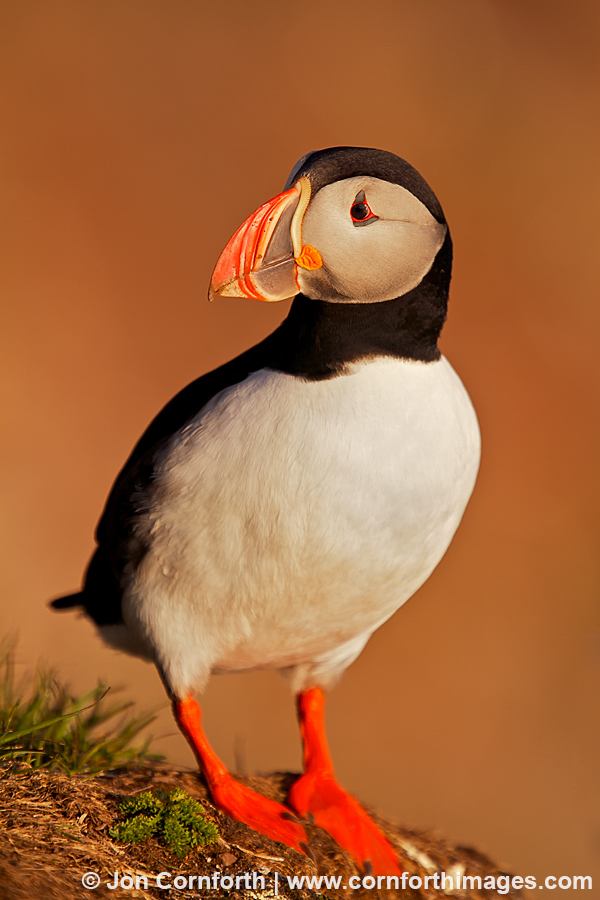
Gold Harbor King Penguins Abstract 1
Posted onThis is an abstract image of king penguins that I created while visiting Gold Harbor during my South Georgia Island expedition. I initially photographed this scene with the aid of my tripod using traditional depth of field and sharp focus techniques, but later decided to explore it using slow shutter speeds and hand-held camera movement. I like how this image represents the dynamic chaos of the penguins as they group together, but constantly move about. I searched for repeating patterns and then used a shutter speed of 0.5 second while panning my camera from side to side. Hundreds of experimental images eventually produced a few, like this one, that realized my artistic ambition. I created this image using my Canon 5DmkIII and Canon 70-200mm f2.8 IS II lens. I processed the RAW file using Aperture 3, Photoshop CS6, and Nik Software’s Color Efex 4‘s White Neutralizer filter.


